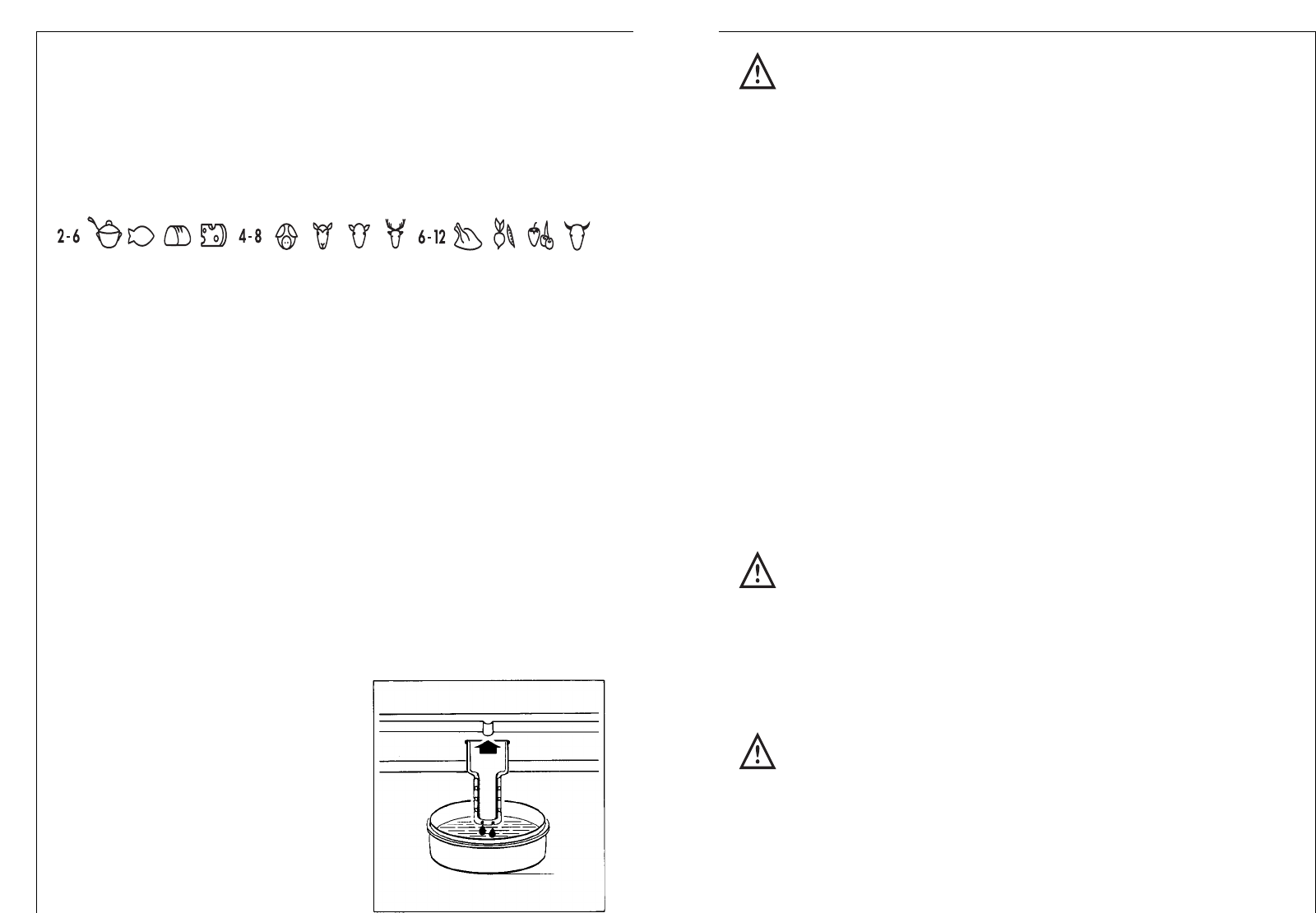
12
Freezing Calendar
• The symbols on the drawers show different types of frozen goods.
• The numbers indicate storage times in months for the appropriate types
of frozen goods. Whether the upper or lower value of the indicated sto-
rage time is valid depends on the quality of the foods and pre-treating
before freezing. The lower value applies to foods with high fat content.
Defrosting
Refrigerator
Frost is automatically removed from the evaporator of the refrigerator com-
partment every time the motor compressor stops, during normal use. The
defrost water drains out through a trough into a special container at the back
of the appliance, located over the motor compressor, where it evaporates.
Freezer
The freezer compartment, however, will become progressively covered with
frost. This should be removed with the special plastic scraper provided,
whenever the thickness of the frost exceeds 4 mm. During this operation it
is not necessary to switch off the power supply or to remove the foodstuffs.
However when the ice becomes very thick on the inner liner, complete
defrosting should be carried out as follows:
1. Remove the frozen food from the freezer, wrap it in several layers of new-
spaper and put it in a very cool place.
2. Switch off the appliance and pull out the plug, or turn the temperature
control knob to “•”.
3. Leave the freezer compartment door
open.
4. Insert the plastic scraper into the
recess provided under the defrost
water channel and place a collecting
bowl under it.
5. Once defrosting is completed keep
the scraper handy for future use;
6. Turn the thermostat knob to the
required setting or replace the plug
in the power socket.
13
Warning!
Never use metal tools to scrape off the frost
Do not use a mechanical device or any artificial means to speed up the
thawing process other than those recommended by the manufacturer.
A temperature rise of the frozen food packs, during defrosting, may shor-
ten their safe storage life.
Switching off the appliance
To switch off the appliance, turn the temperature regulator to position "0"
or disconnect from the electricity supply.
If the appliance is not going to be used for an extended period:
1. Remove all refrigerated and deep-frozen packages as well as ice trays.
2. Remove the mains plug or switch off.
3. Defrost freezer compartment and clean thoroughly (see section: “Cleaning
and Care”).
4. Leave the door open to avoid the build up of odours.
Cleaning and Care
For hygienic reasons the appliance interior, including interior accessories,
should be cleaned regularly.
Warning!
Before carrying out any cleaning or maintenance, disconnect the appliance
from the electricity supply.
• Never clean the appliance with a steam cleaner. Moisture could accumu-
late in electrical components, which could cause an electrical shock! Hot
vapours can lead to the damage of plastic parts.
• The appliance must be dry before it is placed back into service.
Warning!
• Ethereal oils and organic solvents can attack plastic parts, e.g.
– lemon juice or the juice from orange peel,
– butyric acid;
– cleansers which contain acetic acid.
Do not allow such substances to come into contact with appliance parts.














